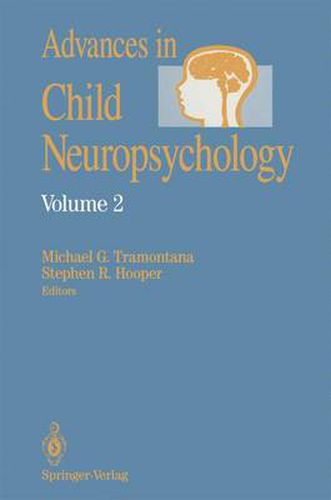Readings Newsletter
Become a Readings Member to make your shopping experience even easier.
Sign in or sign up for free!
You’re not far away from qualifying for FREE standard shipping within Australia
You’ve qualified for FREE standard shipping within Australia
The cart is loading…






This title is printed to order. This book may have been self-published. If so, we cannot guarantee the quality of the content. In the main most books will have gone through the editing process however some may not. We therefore suggest that you be aware of this before ordering this book. If in doubt check either the author or publisher’s details as we are unable to accept any returns unless they are faulty. Please contact us if you have any questions.
In the foreword to Volume 1 of this series, Byron Rourke noted that the field of child neuropsychology is still young. He wrote: It has no obvious birthdate. Hence, we cannot determine its age with the type of chrono metric precision for which our scientific hearts may yearn … . Be that as it may, activity in the field has been growing steadily, if not by leaps and bounds. Although there is nowhere near the intensity of in vestigation of children from a neuropsychological standpoint as there is of adults, there have been notable systematic investigations of considerable interest. Some of the more important of these are presented in the current volume.
I am happy to say that the contents of Volume 2 likewise provide new insights across many important domains of developmental neuro psychology. As the editors note, this book consists of six chapters divided into four general areas, including developmental neuropsychology (one chapter), abnormal neuropsychology (three chapters), assessment (one chapter), and treatment (one chapter). The first chapter is addressed to attention, response inhibition, and activity level in children. In this chapter, Jeffrey M. Halperin, Kathleen E. McKay, Kristin Matier, and Vanshdeep Sharma provide a lucid and articulate review of research on this topic. The authors correctly note by that attention, response inhibition, and activity level are mediated neurocircuits throughout the brain that interact with and modulate vir tually all higher cognitive information-processing domains.
$9.00 standard shipping within Australia
FREE standard shipping within Australia for orders over $100.00
Express & International shipping calculated at checkout
This title is printed to order. This book may have been self-published. If so, we cannot guarantee the quality of the content. In the main most books will have gone through the editing process however some may not. We therefore suggest that you be aware of this before ordering this book. If in doubt check either the author or publisher’s details as we are unable to accept any returns unless they are faulty. Please contact us if you have any questions.
In the foreword to Volume 1 of this series, Byron Rourke noted that the field of child neuropsychology is still young. He wrote: It has no obvious birthdate. Hence, we cannot determine its age with the type of chrono metric precision for which our scientific hearts may yearn … . Be that as it may, activity in the field has been growing steadily, if not by leaps and bounds. Although there is nowhere near the intensity of in vestigation of children from a neuropsychological standpoint as there is of adults, there have been notable systematic investigations of considerable interest. Some of the more important of these are presented in the current volume.
I am happy to say that the contents of Volume 2 likewise provide new insights across many important domains of developmental neuro psychology. As the editors note, this book consists of six chapters divided into four general areas, including developmental neuropsychology (one chapter), abnormal neuropsychology (three chapters), assessment (one chapter), and treatment (one chapter). The first chapter is addressed to attention, response inhibition, and activity level in children. In this chapter, Jeffrey M. Halperin, Kathleen E. McKay, Kristin Matier, and Vanshdeep Sharma provide a lucid and articulate review of research on this topic. The authors correctly note by that attention, response inhibition, and activity level are mediated neurocircuits throughout the brain that interact with and modulate vir tually all higher cognitive information-processing domains.